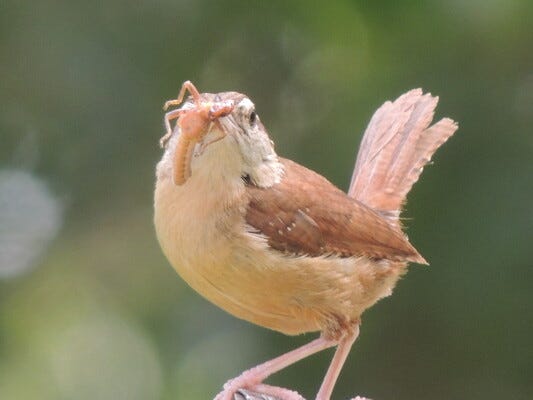by David Salman, Founder and Chief Horticulturist of High Country Gardens
The time to plant more native plants for birds is now! Nearly 50% of songbird populations are suffering as a result of habitat loss and declines in healthy native plant populations and diversity. Your garden can create habitats and help songbirds raise their young. Our Native Songbird Gardens Pre-Planned Gardens are designed specifically to help our songbird population in your area. We offer a garden for each of six regions of the United States.
Recent scientific research conducted by University of Delaware Professor Doug Tallamy has revealed compelling new data that shows diverse populations of native plants are essential for songbirds to successfully raise their young. For instance, we now know that a mating pair of birds needs to collect between 4,000 to 6,000 caterpillars to raise a nest of chicks!

Insects and the Web of Life
Avoiding Pesticides
For as long as I can remember, there has been a horticultural drumbeat that has vilified insects to be something that we don't want in our yards and gardens. Indeed, there are injurious pests that attack our vegetables, our annual and perennial flowers, as well as our trees and shrubs. This mindset has become more of a problem due to the widespread use of toxic chemical pesticides. These poisons have severely disrupted the delicate balance in nature whereby predator insects, bats, birds, reptiles, and amphibians feed on and keep the "bad bugs" under control. For this and many other reasons, gardening naturally and organically MUST be how we grow our ornamental and food plants.
Bugs = Birdfood
Insects are a vital part of the food chain. These six-legged creatures consume plant tissue and convert the energy of the sun into protein for rest of the non-herbivore animal kingdom to feed.
A landscape full of Old World plants (non-natives from Europe, Asia, and Africa) will yield very few caterpillars, and songbirds will not be able to utilize these areas as habitat to raise their young.
In a healthy landscape or larger ecosystem, native plants and insects strike a balance. The insects that feed on native plants consume just enough to live, and multiply without killing or significantly damaging the plants. Thus, nature provides the caterpillars to feed our beloved songbirds. And the result that we humans see is lots of songbird nests full of healthy chicks that will become the next generation of adult birds.
Plants For Birds
Our Native Regional Songbird Pre-Planned Gardens contain a selection of native plants that have been proven to support bird habitat, thanks to research by Prof. Doug Tallamy, the National Wildlife Federation, and the Xerces Society.
We are making it easy for songbird lovers and gardeners who are interested in creating songbird habitat, to plant more natives that beautify their properties and help ensure that songbirds will have places to raise their young. These gardens feature resilient native plants that are some of the best genera for providing food plants for butterfly caterpillars, moth caterpillars, and other insect larvae.
Where possible, plant the garden(s) in sunny areas close to established trees and shrubs to provide additional nesting sites from where the birds can live and stay close to their nests. Mother Nature will appreciate your efforts.
Learn more about habitat gardening!
Native Songbird Pre-Planned Gardens
© All articles are copyrighted by High Country Gardens. Republishing an entire High Country Gardens blog post or article is prohibited without written permission. Please feel free to share a short excerpt with a link back to the article on social media websites, such as Facebook and Pinterest.
